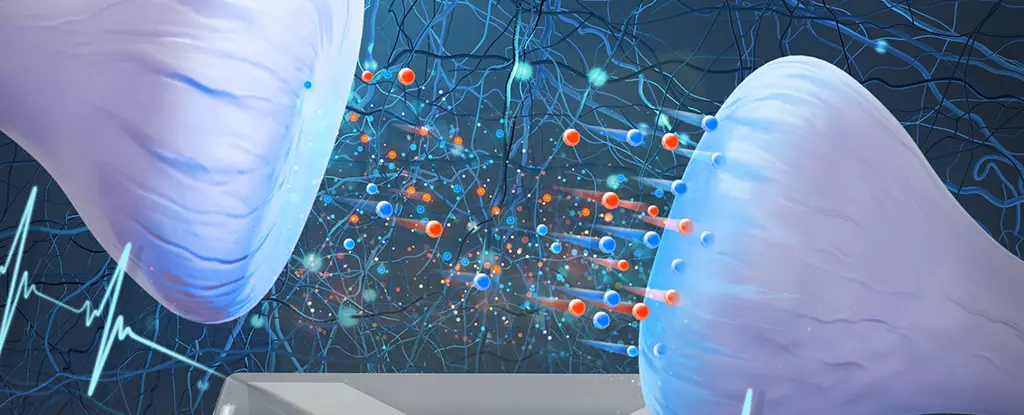In a groundbreaking development, a team of researchers from Utrecht University in the Netherlands and Sogang University in South Korea has successfully simulated neurological junctions known as synapses using water and salt components. This innovation is a significant step forward in the field of iontronics, which merges biology with electronics. Inspired by the natural functioning of the human brain, which relies on ions dissolved in water to transmit signals between neurons, the scientists have created an iontronic memristor that imitates synaptic plasticity, allowing neurons to adjust connection strengths in response to input history.
The iontronic memristor, a cone-shaped device filled with a solution of water and salt, is a mere 150 by 200 micrometers in size – comparable to the width of three to four human hairs. When exposed to electrical impulses, ions move through the channel within the device, resulting in variations in electrical charge and ion movement. This alteration in conductivity can be measured and interpreted to determine the initial input signal, essentially creating a form of memory. The researchers are fascinated by how the length of the channel influences the memory retention duration of the memristor, suggesting the possibility of customizing channels for specific functions, similar to the brain’s adaptability.
While the iontronic memristor is in its early stages of development, its unique design and affordability make it a promising candidate for various applications in the future. The researchers envision potential uses in computing systems that can replicate the communication patterns of the human brain, leading to enhanced efficiency and capacity. The device’s ability to process complex information using water and salt, rather than conventional solid materials, marks a significant milestone in artificial synapse technology. By closely following the brain’s blueprint, the researchers aim to achieve computer systems that can rival the brain’s capabilities.
Looking ahead, the researchers plan to explore different ways of combining synthetic synapses to enhance their functionality. The versatility and cost-effectiveness of the iontronic memristor suggest that it can be scaled for a wide range of applications, paving the way for innovative solutions in technology. By integrating theoretical and experimental physics, the team aims to push the boundaries of scientific discovery and unlock new possibilities in iontronics. The creation of the artificial synapse was a “wow” moment for the researchers, highlighting the power of collaboration and innovation in the field.
The development of iontronic memristors represents a significant advancement in the quest to replicate the complex functions of the human brain. By utilizing water and salt as key ingredients, researchers have successfully recreated synaptic plasticity and memory retention in a small, affordable device. This breakthrough opens the door to a future where artificial synapses can revolutionize computing systems and unlock new capabilities in technology.

Leave a Reply